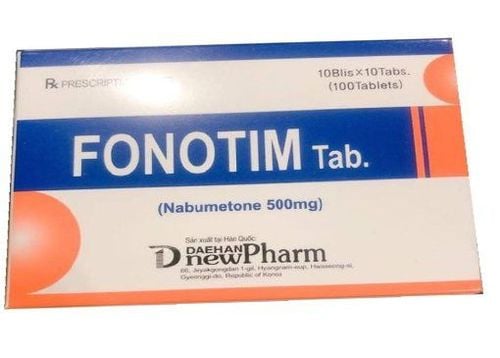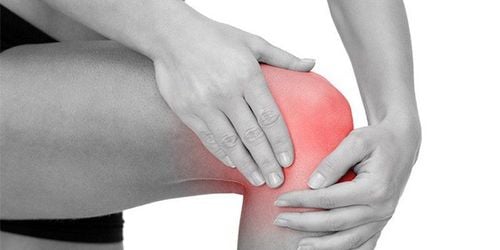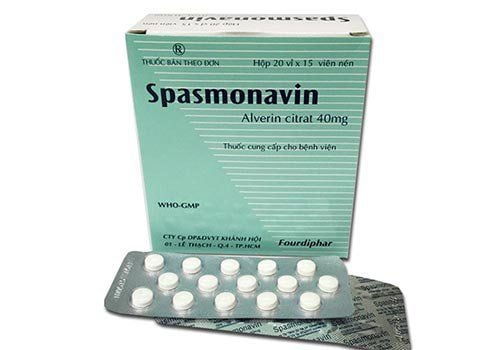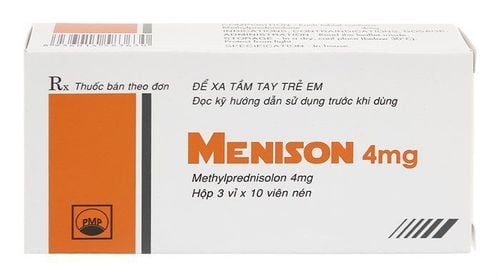This is an automatically translated article.
Aczandia is a prescription medication containing Diacerein 50mg, a non-steroidal anti-inflammatory pain reliever. Aczandia is available in the form of hard capsules. Let's learn more about Aczandia through the article below.1. What are the effects of Aczandia?
With the ingredient Diacerein, Aczandia has analgesic, anti-inflammatory effects, is indicated for the treatment of osteoarthritis, degenerative joint diseases,...In the current osteoarthritis treatment drugs, Diacerein is The only drug capable of affecting the anabolism as well as catabolism of chondrocytes, reducing proinflammatory factors. In-vitro and in-vivo results show that Diacerein and its metabolite - Rhein have inhibitory activity on the production and activity of proinflammatory and pro-catabolic IL-1 in the superficial as well as the deep layers. of cartilage, synovial membrane. On the other hand, Diacerein also stimulates TGF- (transforming growth factor) and extracellular matrix such as proteoglycan, hyaluronic acid, aggrecan, type II colloid. In addition, the mechanism of action of Diacerein is related to the inhibition of the activity of macrophages. Animal studies have shown that Diacerein consistently reduces cartilage degeneration.
Clinical studies have shown that Diacerein reduces pain and improves joint function significantly after 1 month of treatment when compared with placebo (placebo), the analgesic effect of Diacerein after Diacerein can last for at least 2 months after finishing treatment. The ICHODIAH study showed that Diacerein significantly slowed cartilage degeneration.
2. Pharmacokinetics of Aczandia
Aczandia after entering the body orally, the drug is well tolerated in the stomach, taking Aczandia with meals increases bioavailability. Diacerein then enters the liver and is reduced to Rhein, a sulpho-conjugated metabolite. After taking Diacerein at a dose of 50mg, the drug concentration peaked at 3mg/l after about 2-3 hours, an average of about 2.5 hours. Up to 99% of Diacerein is bound to plasma proteins, mainly due to its strong affinity for albumin.The half-life of Rhein - the active metabolite of the drug is about 4-5 hours. About 30% of the drug is excreted in the urine. 80% of Rhein is excreted in the urine as conjugates and the remaining 20% is excreted unchanged in the urine.
Repeated dose of 50mg Diacerein x 2 times/day causes slight accumulation of drug. In patients with severe renal impairment (with glomerular filtration rate <30ml/min) the use of Diacerein doubles the drug's half-life and halves its urinary excretion.
3. Dosage and how to use Aczandia
Aczandia is a prescription drug that is prescribed by a doctor and is taken by mouth. For the drug to be effective, it should be taken with a meal.Dosage of Aczandia (Diacerein 50mg) for adults: 1 tablet/time x 2 times/day
Adjust dose of Aczandia for patients with renal failure with glomerular filtration rate <30ml/min: Reduce dose by half.
Aczandia can be combined with another nonsteroidal anti-inflammatory drug or in combination with an analgesic during the first 2-4 weeks of treatment.
4. Contraindications of Aczandia
Do not use Aczandia in patients with hypersensitivity to Diacerein or any other ingredient in the excipients of the drug.Aczandia is also contraindicated in people with known hypersensitivity to anthraquinone derivatives.
5. Side effects when using Aczandia
Patients treated with Aczandia may experience increased intestinal transit time and abdominal pain symptoms. However, these symptoms mostly resolved on their own after a few days of treatment and the patient was able to continue taking the medication.In addition, the urine of patients receiving Diacerein may be darker than normal, due to the drug's compounds being excreted in the urine and this is not clinically significant.
However, it is still necessary to inform the doctor when experiencing these or other side effects while taking Aczandia.
6. Be careful when using Aczandia
Aczandia is a prescription drug, so use Aczandia only when prescribed and prescribed by a doctor. Do not arbitrarily calculate or change the dose of Aczandia without consulting a doctor There are no clinical studies on Diacerein in children under 15 years of age, so Aczandia should not be used in patients in this age group. . It is not recommended to simultaneously combine Aczandia with laxatives. Patients with intestinal disorders, especially irritable bowel disease, should weigh the benefits and risks when taking Aczandia. Avoid concomitant use of Diacerein with drugs containing salts, hydroxides or oxides of aluminum, magnesium, or calcium, because drug interactions may occur leading to decreased absorption of Diacerein. If you want to take these drugs, it must be at least 2 hours from the time of taking Diacerein. Aczandia should be used with caution in patients with renal impairment, as renal impairment may alter the pharmacokinetics of the drug. Attention should be paid to dose adjustment in patients with renal impairment with creatinine clearance < 30 ml/min. Aczandia should not be used by pregnant women because of the risks associated with its use. In addition, diacerein derivatives can pass into breast milk and therefore should not be treated with Aczandia in nursing women. There have been no reports of harmful effects of Diacerein when driving or operating machinery. In case of overdose of Diacerein must notify the doctor immediately.













